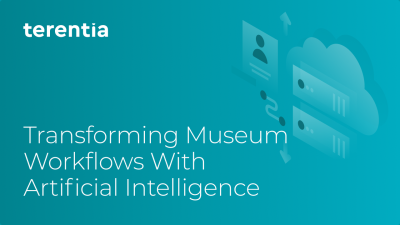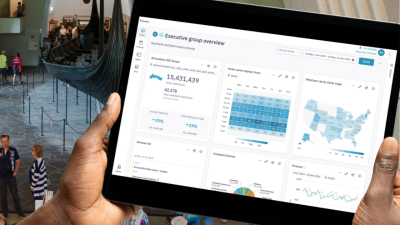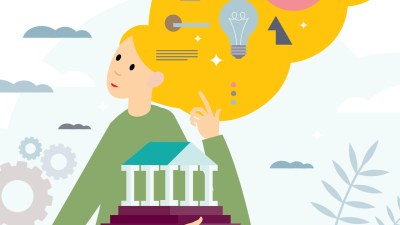How many of you know of dysfunctional relationships between universities and museums? Hark–I hear a forest of hands rise across the land. Too often colleges and universities fail to take advantage of the resources in museums (their own, or other regional institutions.) Too often expertise within and between museums and universities are walled into missile-hardened silos, trapped by labels that separate “science” from “art” (and “history” and “philosophy,” etc. etc.)
The Phillips Collection is trying to break down these walls. Yesterday I attended a convening here in DC, arising from a partnership between The Phillips and the University of Virginia that aims to “envision new ways for scholars and practitioners to create the new – across all domains of learning and human endeavor – using experiential learning and dynamic interactions with change agents to explore the power of abstraction and associative thinking.”
Starting with the premise that “universities and museums need to grow in their roles as innovation leaders” the convening brought together practitioners from art, medical research, music, dance, business and magic to explore how their realms could inspire and inform each other. I think this is a great approach, being a firm believer in the “edge effect”—the biological phenomenon of biodiversity flourishing at the intersection of different habitats.
It was an interesting day—demonstrating the challenges and potential benefits of such explorations. As someone trained in both cell and organismal biology, who has worked with museums of all types, I was perhaps uniquely positioned to observe the attempts of these groups to communicate. Sometimes the practitioners seemed almost intentionally abstruse—reveling in their specialized language and referents. Sometimes, while presenting their own material with good will and enthusiasm, they did not seem to know how to help people bridge the connection to other fields. Sometimes things really clicked, opening new windows into how one field could potentially illuminate another.
Here is one project I think has the potential to truly capitalize on the possibilities of exploring art through various branches of science and science through multiple modalities of art: Matthew Burtner (tenured associate professor at the University of Virginia and Director of the Interactive Media Research Group and Associate Director of the VCCM Computer Music Center) talked about his eco-acoustic opera, a work-in-progress of “computer enabled environmental sonic art.” (Here is a link to some of his completed eco-acoustic works.) Short and extremely simplistic description of his work: Matthew samples and transforms data from the natural world into sound and visual information. This includes historic data (e.g., records of climate change), as well as live feeds (e.g., acoustic monitoring beneath the arctic waters.) A local action can (a whale song captured via underwater boom) can have remote consequences (cuing the entrance of human singers.) While the general public may understand in an abstract way that climate data is important, if you aren’t a data-geek its hard to really grasp what the dramatic change in the ice pack means to residents of the arctic. Matthew’s project might help humanize the data and make it more accessible. (And certainly prettier.)
Anyway, in the spirit of using art to explore connections, here is my poetic response to the convening, envisioning where such collaborations between very different fields of specialization may lead. A true futurist, I hedge my bets by describing two possible future states, rather than predicting what will come…
Dark Future
Terms and signifiers
Rarified, precise
Requiring multiple translation
Field to field to field
Intersections yielding points of entry
So very narrow
Camels, needles
Come to mind
If this is our portal
To a future world
We will be beautiful
Splendid
Deep
And, mostly…alone
Bright Future
Slow down!
Back up
Explain in simple words
Transform profound abstractions to
Sights and sounds the
Primal sections of my brain
Can grasp
Peering through an unfamiliar lens
The world transforms
Internal lines
Essential rhythms
Emerge, inspire me to overcome
Reality,
Gravity,
Serendipity,
Demonstrate the power of ideas to make
Rocks fly
Cookies teach
Whales sing the future of the world through human voice
Creating the New
Category:
Center for the Future of Museums Blog
Posted on May 4, 2010
Skip over related stories to continue reading article









A few possibly relevant excerpts from my Artistic Manifesto (1994):
If artists place too much reliance
on technology and information science,
who will be the world's seducer:
the artist… or her producer?
…Even
the most adventurous folk must undertake
a Rosetta Stone for Art's sake.
(If only for their own.) To educate
is to find the essence. To communicate
(regardless of whether one has much to say)
will soon distinguish the craft today
from the more mercenary works of journeymen.
Posterity is the reward of the artisan.
…Endowment is legacy,
it is one way we ask,
"We did what we could;
did we do good?"